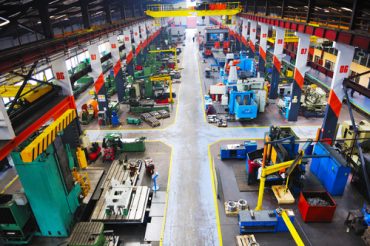
Expanded use of digital technologies like IoT, enterprise connectivity, and analytics is the key to addressing the major challenges manufacturers face in 2024.
It seems the world, in general, and the manufacturing industry, in particular, have moved beyond the problems that occurred during the pandemic and the major supply chain disruptions of a few years ago. However, in 2024, manufacturers face new challenges, many of which can be eased by adopting more digital technologies.
Recent industry studies bring the issues manufacturers face this year and how they plan to address them into focus. One such study, described in a State of Manufacturing Report, found that in 2023, the manufacturing industry was “eager to adopt new technologies in the face of economic uncertainty and workforce challenges.”
Other studies come to similar conclusions. In its “2024 Manufacturing Industry Outlook,” Deloitte noted that manufacturers face economic uncertainty, supply chain disruptions, and difficulties filling skilled labor positions. In all cases, Deloitte believes technology has a significant role to play moving forward.
Specifically, technologies, including the Internet of Things (IoT), automation, analytics to power data-driven decisions, and more, can help manufacturers improve operational efficiencies, control costs, and more. These technologies, used in production environments, provide real-time insights and end-to-end visibility into processes. Those insights and that visibility allow manufacturers to identify production bottlenecks, inefficiencies, and waste. Once these issues are discovered, actions can be taken that help reduce outages and improve operations.
In the long term, most manufacturers will double down on their digital investments by fully embracing Industry 4.0 and smart manufacturing. For example, Deloitte found that 83% of manufacturers believe that smart factory solutions will transform the way products are made in five years. But in the short term, the introduction and use of IoT, automation, and analytics can deliver immediate and significant benefits.
See also: Manufacturers Find New Applications as IoT Devices Proliferate
Digital supply chains and other technologies
While the manufacturing industry has greatly rebounded from the impact of massive supply chain problems during the pandemic, issues still persist. Many manufacturers are trying to address their supply chain issues by combining production line insights obtained via IoT devices and analytics with enterprise connectivity that makes plant floor operational technology (OT) data available to traditional enterprise IT systems such as ERP, CRM, and more.
In its outlook, Deloitte noted that by adopting digital tools, manufacturers gain enhanced transparency into their supply chain. How is that done? By uniting OT and IT systems, manufacturers can become proactive in their ordering processes. That data, combined with data from suppliers, allows manufacturers to digitize their supply chain processes.
GenAI enters the scene
The introduction of more technology into the manufacturing process is driving the need for skilled workers. However, manufacturers are having trouble finding skilled labor, according to Deloitte and others.
The issue is not unique to manufacturing. Fortunately, across all industries, many are eyeing generative AI (GenAI), automation, and other tools to help.
GenAI can be used to assist skilled workers and help make them more efficient. For instance, GenAI might be used to quickly summarize a large equipment user manual, find a specific setting in an equipment spec sheet, or search for anomalies in an equipment’s log outputs.
By offloading these common tasks, GenAI frees up the skilled worker so they can complete more of their specialized chores in a given time. That may reduce the need to hire additional skilled workers in a market where it is hard to find them.
Another common use of GenAI is to assist workers who may not be as technically mature as more seasoned workers. For example, OEMs that make production line equipment may put a GenAI front end on their management console. Rather than having to know cryptic command line instructions, GenAI may allow a worker to type or speak a request (e.g., set the operating speed to X). GenAI would convert typed or articulated requests into a command the machine understands. Here, again, this application of technology reduces the need to hire those hard-to-find skilled workers.
Similarly, intelligent automation of manufacturing processes based on real-time status data frees up a worker’s time. Again, by offloading rote tasks, workers have more time to spend on important chores. For example, rather than having a worker routinely walk through the plant floor and assess the health status of a piece of equipment, automation could be something as simple as sending an automatic alert when health monitoring data of that piece of equipment exceeds a threshold.
What’s on the tech horizon?
Expanded use of technologies like IoT, enterprise connectivity, and analytics that have been used for years is the key to addressing the major challenges manufacturers face in 2024.
Other technologies and broader initiatives that are just now being adopted will certainly play an important role going forward. They include full adoption of Industry 4.0 and a move to smart factories. The underlying technologies that will power these efforts are exactly the technologies delivering benefits today.







